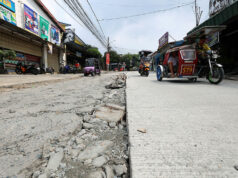Poverty eradication SDG seen out of reach due to pandemic
THE GOAL of eradicating extreme poverty by 2030, a key Sustainable Development Goal (SDG), may no longer be possible as the coronavirus pandemic wipes out a decade’s worth of gains on this front in the worst-case scenario, the United Nations (UN) said.
In an Oct. 15 policy brief, the UN Department of Economic and Social Affairs (DESA) estimated that 3.5% of Asia’s population would remain poor by 2030 under the base-case scenario, while the worldwide share of extreme poor is estimated at 7.6%.
Even in the most optimistic scenario, where gross domestic product per capita growth averages 6.9-9.9% and income inequality falls 25-50%, 1.4-1.9% of the population in the region and 2.7-4.2% globally will stay poor.
“Indeed, even the optimistic and utopian scenarios still have hundreds of millions of people living in extreme poverty. This would represent a significant improvement over the 2020 starting point of nearly 700 million people in extreme poverty, but it would be nowhere near complete eradication,” it said.
More people will be pushed back into poverty under the pessimistic scenario of per-capita growth averaging 1.9% and inequality rising 25%, leaving 7.7% of Asia and 12.9% of the world in a state of poverty by the end of the decade.
“This would wipe out all the gains of the past decade, causing unimaginable hardship along the way,” UN DESA said.
It said even “unprecedented” economic growth and efforts to reduce inequality will not be enough to completely eradicate poverty by the end of the decade.
In the Philippines, 4.5 million more Filipinos could slide back to poverty if 75% of the economy goes into a strict form of lockdown once more, according to the National Economics and Development Authority in a Palace briefing Thursday.
“Policies to reduce inequality and promote a country’s social and macroeconomic resilience, such as the strengthening of labor standards, and the expansion of the social protection systems and universal health coverage, are needed now more than ever,” DESA said.
It also warned that the window to minimize possible long-term consequences of the pandemic on poverty “is closing rapidly.”
“The effects of the crippling debt overhang of developing countries could have additional negative consequences, as political unrest spills across borders and global financial stability suffers, further undermining global economic growth,” it added.
Nearly 200 countries committed to eliminate poverty by 2030 as part of the 17 SDGs. — Beatrice M. Laforga



